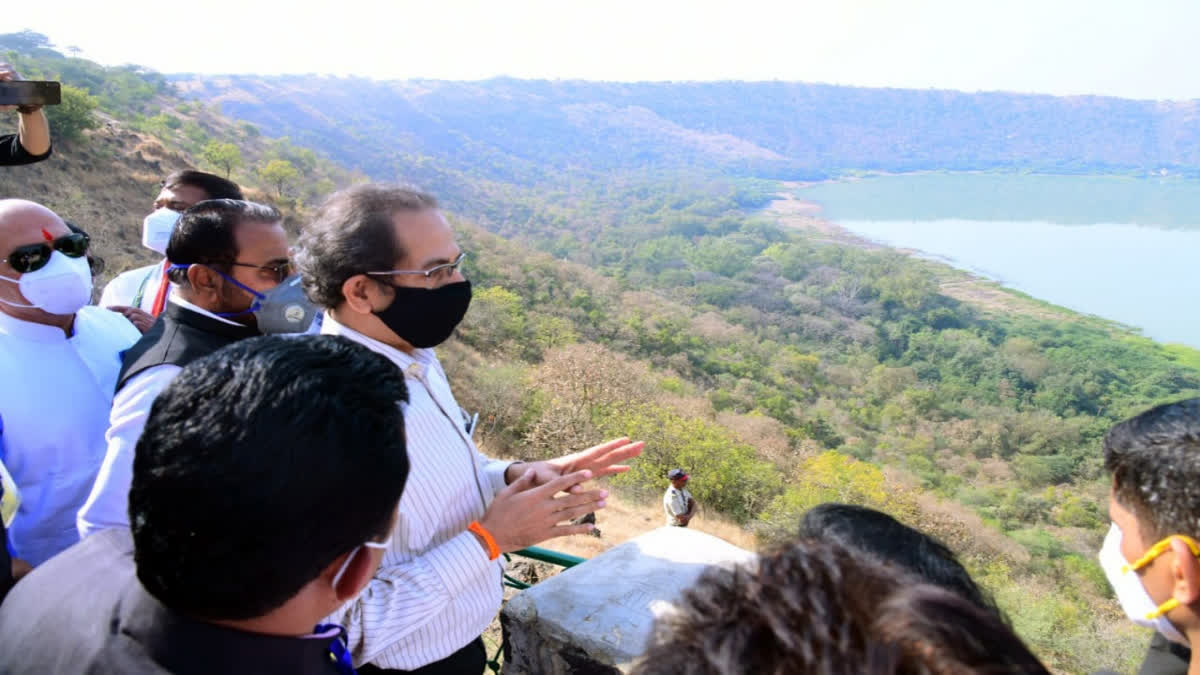The Union Government has recently sent names of 10 geological sites to the Archaeological Survey of India (ASI) for inclusion in the list of world heritage sites. This is a welcome step, as there is not a single geopark in India which UNESCO recognises, even though India is a signatory to the establishment of UNESCO Global Geoparks.
The Government should expand this small step to develop a strategy to conserve all 32 geological heritage sites identified by the Geological Survey of India as National Geological Monuments. The geodiversity of India is as varied as most other aspects of the country, with landscapes changing from the world’s tallest mountain peaks to coastal dunes, large inland water bodies and coral reef islands. In several places, we find a variety of rocks and minerals and distinctive fossil assemblages.
Importance of geological features:
These geological features and landscapes that evolved over billions of years tell us the spectacular origin stories of our planet and the evolution of the Indian landmass as we see it today. Geo-heritage sites are educational spaces where people acquire badly needed geological literacy, especially when India's collective understanding of this legacy is abysmal. Such areas known for geological importance, thanks to unplanned real estate growth, are being knowingly or unknowingly destroyed. Destructive stone mining activities also add to this misery. India’s geological heritage will be lost forever if anthropogenic activities are allowed to proceed unregulated.
Geological conservation seeks to ensure the survival of the best representative examples of India's geological features and events so that the present and future generations can appreciate more of the world’s best natural laboratories. Unfortunately, geological conservation unlike its archaeological counterpart, remains an ignored subject.
One can cite many such cases of wanton destruction of such priceless geological jewels like the 60-million-year-old Basalt columns found in St Mary’s Island off Udupi Mangalore, the dinosaurian fossil sites of the Kutch plains of Northwest Gujarat, the Trichinopoly region in Tamil Nadu, originally an ocean basin in the Mesozoic (200 million years ago).
They should be declared as natural assets, as they represent sites of unusual rock types and landforms that preserve records of geological events, where significant advances in the knowledge of the early Earth were made. How many of us know about the little-known Dhala meteoritic impact crater in Shivpuri, Madhya Pradesh, a 1.5-2.5-million-year-old crater preserved as a mark of a celestial collision when the early life must have just begun? Another example is the more famous Lonar Crater in Buldhana District of Maharashtra, which was formed during a meteorite collision dated to be 50,000 years – a notified geo-heritage monument
Much talked about in recent years is the Ram Setu (Sethsamundram) – shallow water coral formation in the Bay of Bengal, extending from the Tamil Nadu coast toward northern Sri Lanka. This structure falls in a marine biosphere that needs to be preserved. During the peak glaciation interval 22,000 years ago, long stretches of the Indian coast, including parts of the Sethusamundram, were exposed above water.
A more recent episode of sea-level drop occurred between 1200 and 700 years ago – an interval called the "Little Ice Age". Since then, sea-level grew higher in pulses so the coral polyps could grow higher on the newly submerged platforms. The Ram Setu is one such magnificent coralline ridge. This is another example of a potential geological heritage monument that needs to be preserved. All such features tell us how the land we are so familiar with came to be and are part of an evolutionary history that made India what it is today.
First International Symposium on the Conservation of our Geological Heritage
The importance of the shared geological heritage of our planet was first recognised in 1991 at a UNESCO-sponsored event, “First International Symposium on the Conservation of our Geological Heritage”.
The delegates assembled in Digne, France and endorsed the concept of a shared legacy: “Man and Earth share a common heritage, of which we and our governments are but the custodians”. This declaration foresaw the establishment of geo-parks in countries like Canada, Spain, Australia, the US, and the UK, as sites commemorating unique geological importance.
These sites also promoted geo-tourism that generates revenue and employment. The network of geo-heritage sites is also intended to complement the World Heritage and Biosphere programmes. UNESCO also provided guidelines for developing national geo-parks that they become part of the Global Geoparks Network. Today, there are 169 global geo-parks across 44 countries, including Vietnam and Thailand. India is yet to become a part of this league.
Despite international progress in geo-conservation, it has not found much traction in India, although some questions have been raised in the Parliament in the past. The geo-heritage sites cannot be protected without legislation, and such proposals are with the concerned government ministries waiting for approval.
In 2009, there was a half-hearted attempt to constitute a National Commission for Geo-Heritage Sites through a bill introduced in the Rajya Sabha. Though it was referred to the Standing Committee, for some unstated reasons, the Union Government backtracked, and the bill was withdrawn. In 2019, a group of geologists under the auspices of the Society of the Earth Scientists petitioned the Prime Minister and the Ministries concerned about the need for a national conservation policy under the supervision of a national body committed to the upkeep of geo-heritage sites.
But the government's apathy continues. The Geological Survey of India is the custodian agency entrusted with monitoring the status of the geo-heritage sites. Their website indicates 32 sites that are selected for preservation. Geo-conservation should be a major guiding factor in land use planning. A progressive legal framework is needed to support such strategies. India lacks a comprehensive national policy on conserving geo-heritage, following the example of US National Park Services signed into law in 1916. Our “tryst with destiny” goes back billions of years.
(Disclaimer: The opinions expressed in this article are those of the writer. The facts and opinions expressed here do not reflect the views of ETV Bharat)



